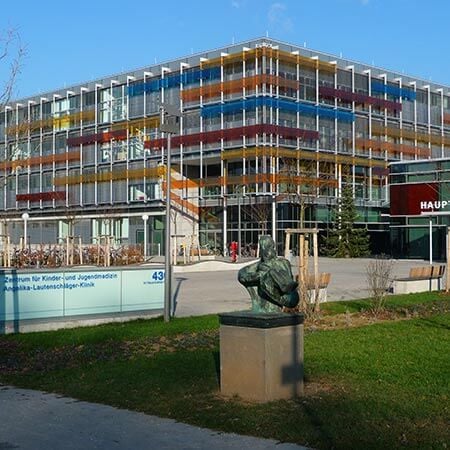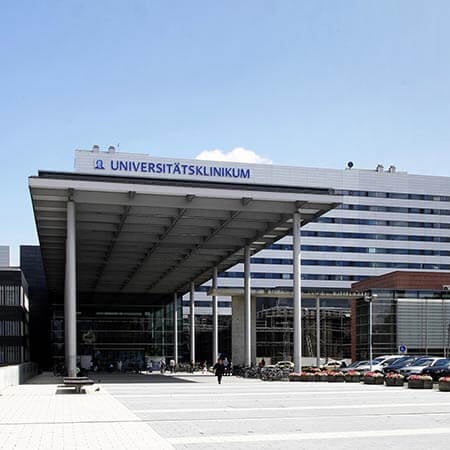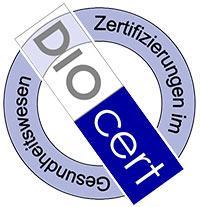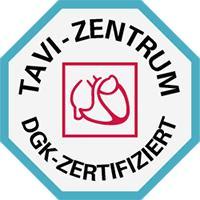Pulmonary hypertension (PH) is an increased pressure in the pulmonary artery up to 25 mmHg and more at rest. With the natural course, the disease is fatal, but the treatment for pulmonary hypertension in the specialized European hospitals is successful in most patients. Whenever possible, cardiologists find and eliminate the cause of the development of pathology, prescribe drug therapy and non-drug measures. When necessary, physicians resort to surgical treatments. The most efficient treatment scheme is designed after the meticulous examination and comprehensive assessment of the patient’s health condition.
Content
- Causes of pulmonary hypertension
- Symptoms of the pathology
- Diagnostics of pulmonary hypertension
- Conservative treatment
- Surgical treatment
- Other medical conditions in people with PH
- How to get treatment in the world's leading hospitals
Causes of pulmonary hypertension
According to the etiology, the following types of pulmonary hypertension are distinguished:
- Idiopathic, when the origin of the disease is unknown.
- Hereditary that is associated with genetic mutations.
- Drug-induced that is caused by drugs or toxins (e.g. by cocaine, antidepressants, amphetamines and methamphetamines, cytostatics, St. John's wort, very rarely – by oral contraceptives and estrogen drugs).
- Disease-associated that develops against the background of HIV, rheumatic pathologies, portal hypertension (complication of liver diseases), congenital heart defects in children, hemolytic anemia.
- Persistent pulmonary hypertension in children of the first month of life that occurs due to pulmonary veno-occlusive disease or pulmonary capillary hemangiomatosis.
The pathology develops due to pathologies of the left chambers of the heart, including valvular defects, with lung diseases, pulmonary embolism, tumors, blood diseases, renal failure.
With pulmonary hypertension, the arteries in the lungs narrow, gas exchange worsens and shortness of breath appears. The load on the right ventricle increases, so its size increases as well. In the future, ischemia (oxygen starvation) of the right ventricle occurs and right ventricular failure develops.
Symptoms of the pathology
The pathology has no specific complaints. The patients usually complain of shortness of breath, weakness, fatigue, chest pain. Some have bouts of dizziness and fainting.
According to WHO, 4 functional classes of pulmonary hypertension are distinguished in Europe:
- Class 1 – no restrictions on physical activity, symptoms appear neither during exercise nor at rest. Due to the absence of clinical manifestations, the pathology is rarely diagnosed at this stage.
- Class 2 – comfort at rest, but the appearance of mild shortness of breath during exercising (e.g. making bed, shopping, climbing stairs).
- Class 3 – with pulmonary hypertension of the 3rd degree, patients are forced to limit their physical activity due to the emerging symptoms, such as severe shortness of breath, fainting, fatigue.
- Class 4 – symptoms can be present at rest (e.g. edema in the ankles and feet) and increase dramatically even with minimal physical exertion.
Diagnostics of pulmonary hypertension
During the physical examination the healthcare professional detects non-specific signs of pulmonary hypertension. These are edema of lower extremities, enlarged liver or ascites that is detected during the deep palpation of the abdomen. Jugular veins are enlarged and visible, they may collapse with inspiration in patients with mild pulmonary hypertension or be the same (or even become dilated) in patients with severe and decompensated pulmonary hypertension.
As for the simplest instrumental examinations, blood pressure is often low, while the resting heart rate is increased. Arterial oxygen saturation at rest can be reduced or normal, while arterial oxygen saturation during physical exertion is severely disturbed.
The visualizing methods give more information about the state of the heart muscle, volume of the heart chambers, etc. First of all, echocardiography may suggest pulmonary hypertension. The method also identifies some of the causes of this condition – congenital and acquired heart defects.
Echocardiography helps to roughly estimate the pressure in the pulmonary artery. Systolic blood pressure is determined by regurgitation (backflow of blood) at the tricuspid valve, and diastolic one by the pressure difference between the left atrium and the right ventricular outflow tract.
Ventilation perfusion lung scintigraphy is used in European hospitals to distinguish idiopathic pulmonary hypertension from chronic pulmonary embolism.
The main diagnostic method is right heart catheterization. The doctor inserts the catheter through the vessels in the leg or arm. It measures the exact pressure in the pulmonary artery, right ventricle, and atrium. In the best hospitals of Europe, cardiac catheterization is a safe procedure, although it has a higher price. It gives complications no more often than in 1% of cases.
Other tests that can help clarify the diagnosis and determine the cause of pulmonary hypertension:
- ECG
- Chest X-ray
- CT scan of lungs
- 6-minute walk test (normally a person must walk at least 500 m during this time)
Conservative treatment
The treatment of pulmonary hypertension may involve the use of the following methods:
Non-drug treatments are:
- Pneumococcal and influenza vaccination
- The use of oxygen in air travel
- Physical rehabilitation (training under the supervision of a specialist)
- Limited heavy physical exertion
Drug treatment does not cure pulmonary hypertension, but only supports heart function, reduces symptoms, reduces the risk of complications, and improves quality of life. Patients are prescribed phosphodiesterase inhibitors, endothelin antagonists, prostacyclin analogs. If possible, one drug is prescribed from these three pharmacological groups. Some patients require a combination of the two drugs.
According to health indications, anticoagulants, diuretics, calcium antagonists, iron preparations, oxygen inhalation, cardiac glycosides are used. For instance, diuretics remove excess fluid, so blood pressure lowers and edema becomes less expressed. Anticoagulant medicines prevent blood clotting (blood clots block lung vessels and aggravate the disease).
The treatment can be directed at eliminating or compensating for the cause of pulmonary hypertension, if known. These can be lung diseases, heart and blood pathologies, rheumatic and other diseases. Their successful treatment helps to reduce the severity of pulmonary hypertension.
Surgical treatment
Depending on the cause and type of the pulmonary arteries’ affection, different surgical treatment options are used. Some of them restore blood flow in the blocked arteries, others facilitate work of the heart muscle. Cost of treatment with surgery is higher compared to drug treatment, but it often leads to better long-term health outcomes.
Thrombectomy (or pulmonary endarterectomy). It is the operation to remove blood clots from the pulmonary artery. It is indicated if thromboembolism becomes the cause of pulmonary hypertension. The procedure is carried out only in specialized centers. The patients are then prescribed anticoagulants for life.
Balloon pulmonary angioplasty. The procedure is considered if a patient can’t tolerate pulmonary endarterectomy. During the intervention a surgeon inserts a tiny balloon into the pulmonary arteries. After reaching the blocked part of the vessel, the balloon is inflated. This pushes the blocking substances aside, improves blood circulation, and lowers blood pressure.
Atrial septostomy. The doctor makes a hole between the atria and thus creates a discharge of blood from the right atrium to the left. As a result, the right half of the heart is unloaded, the pressure in it decreases, cardiac output increases, and the supply of oxygen to the tissues of the body improves. Such operations are performed only with pulmonary hypertension of functional class 4 or with frequent loss of consciousness, if drug treatment does not work.
Pulmonary artery denervation. This is the novel method that needs further investigation. The intervention is performed endovascularly, with catheter ablation. It has been demonstrated that the pulmonary artery denervation improves pulmonary circulation and exercise tolerance.
Organ transplantation. Doctors perform a transplant of either one or both lungs, or a heart-lung complex. These are infrequent operations, as physicians need to find a suitable donor and the cost of treatment is rather high. They are used when other treatments have failed to improve a patient's condition. The five-year survival rate of patients after transplantation of both lungs or heart-lung complex is about 75%.
Correction of concomitant pathology. Sometimes the cause of hypertension is another heart condition that can be surgically treated. For example, if a patient has valvular defects, they can be corrected. Doctors repair or replace valves. In foreign hospitals, some manipulations can be performed using the endovascular method, through an incision in the leg, without major open heart surgery.
Other medical conditions in people with PH
Women with pulmonary hypertension are advised to avoid pregnancy. This condition is dangerous for such patients, as it leads to an increase in the volume of circulating blood and thus increases the load on the heart. However, PH is often diagnosed in women of childbearing age, so the treatment regimens for such clinical situations are designed. The medical team in this case consists of obstetricians, pulmonary hypertension specialists, critical care specialists, and, further, neonatologists. Calcium channel blockers, phosphodiesterase type-5 inhibitors and prostacyclin are used.
Some patients with PH may need surgery for the concomitant diseases. PH increases risk of perioperative complications. In addition, general anesthesia is contraindicated to such patients. Whenever possible, surgery is performed under epidural anesthesia. Close monitoring is required in order to avoid systemic hypotension (it can cause ischemia of the right heart ventricle) and high pulmonary arterial pressure.
Patients with severe and life-threatening health conditions, such as acute cor pulmonale or cardiogenic shock against the background of PH, are admitted to the intensive care unit (ICU). In this case physicians pay special attention to maintaining normal blood pressure and other vital signs.
How to get treatment in the world's leading hospitals
You can undergo diagnostics and treatment of pulmonary hypertension abroad. The Booking Health specialists will select a specialized cardiac surgery clinic for you and organize your trip. Booking Health is a medical tourism provider that has been organizing the treatment of patients from 75 countries in the leading European hospitals and healthcare facilities outside Europe for more than 10 years.
Both doctors and patient case managers working at Booking Health are regularly trained to gain new medical knowledge and provide effective medical and organizational assistance. Booking Health offers the following benefits for you:
- Selection of a specialized hospital with high treatment success rates
- Direct communication with your attending physician
- Preliminary preparation of the medical program, without repeating previous diagnostic examinations
- Provision of a favorable cost of treatment, without extra charges and additional coefficients for foreigners (saving up to 50% of the initial price)
- Doctor's appointment on the most suitable dates
- Independent control of the medical care program at all its stages
- Assistance in buying and forwarding medicines
- Communication with the hospital after the completion of treatment
- Control of prices, invoices and return of unspent funds
- Organization of additional diagnostic examinations or rehabilitation (if necessary)
- Top-class service: booking hotels, plane tickets, transfers
- Interpreting services and assistance of a personal medical coordinator
Please, leave your request on the Booking Health website, and a medical advisor or a patient case manager will contact you on the same day. You will discuss treatment options, cost of treatment in European hospitals and healthcare institutions outside Europe, possible dates of the therapy start and other issues.
Authors: Dr. Nadezhda Ivanisova, Dr. Sergey Pashchenko


















